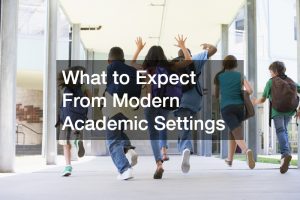The ongoing pandemic is beginning to reconfigure how teachers exercise their profession and how students learn. The impact of COVID-19 to educational institutions covering both formal and non-formal education deep and widespread. A UNESCO study revealed that at least 60 percent of the world’s student population is affected mainly due to government restrictions and localized school closures. A total of 1.18 billion students in 143 countries have had to stop going to school since the lockdowns imposed by governments and public health authorities. Music academies, trade schools, talent development centers, theater groups for the youth and children, sports clinics, and other places for learning have also ceased to operate.
Since July, however, some countries have eased their restrictions and have allowed many sectors to continue their operation including schools in areas with low or zero rates of virus transmission. To enable schools to resume classes, strict procedures to ensure health and sanitation were reviewed and implemented. Even piano lessons for children would have to adopt new protocols to ensure the health and safety of students and their music teachers, whether the class is done at the academy or at home. Hand sanitation stations, temperature scans, and contact tracing are now part of daily class activities.
Shift to Online Learning
Perhaps one of the most evident change in schooling is the wider scale of shift to online learning. The quarantine levels imposed in different countries forced schools to rethink and adapt to the “new normal”. Instead of waiting for the new coronavirus pandemic to end, which might take at least two years more, schools are now bringing the classrooms from the campus to the homes of the students.
Using the power of the internet and the latest innovations in educational technology, many educational institutions have invested resources to acquire better learning management systems (LMS). An LMS is a web portal where students can access lessons and other learning resources. Real-time or synchronous learning can be done through video-teleconferencing technology where the instructor or teacher holds a class for a group of learners who log-in online at the same time and form a virtual classroom. It can also be asynchronous where the lessons are recorded as videos, audio commentary, or presentations that can be streamed or viewed online. Most LMS also incorporate an online examination feature where the student can answer unit tests and have the system post results and corresponding academic grades in just a matter minutes or seconds.
The shift to online distance learning has not been difficult for most learners, ranging from toddlers to college-level students. Present-generation students are very tech-savvy, often being more adept in the use of computers and gadgets than their adult teachers and instructors, and definitely more knowledgeable in technology compared to their parents or guardians.
Just like grade school pupils and high school students, college-level learners are very comfortable with online learning. They can even attend entire classes online using their smartphones. This is seen as a welcome development for many of them who value their social life, athletic pursuits, and other non-academic interests as much if not more than their academic studies. With more time for recreation and social life, most students are embracing the new way of going to class.
Developing New Teacher Competencies
Many teachers, especially in the Asian region, had to unlearn and learn new ways to teach. The adoption of online technologies have prompted them to catch up and become more comfortable with technology. While educators have basic computer literacy, they have had to undergo seminars and training sessions to orient themselves and navigate effectively when using new software or hardware for online distance learning. ;
New Business of School

School owners and administrators, too, have had to adopt new business models and strategies. For Ivy League schools in the US, a greater focus on their online university program offerings is now a necessity. With travel restrictions still imposed in many countries outside the United States, a significant decrease in foreign student enrollment is inevitable. These universities are now relying on the reopening of US embassies and consulates around the world since the foreign students need to first secure their student visas before starting school live and onsite. With barriers to travel still in place, many foreign students have opted to temporarily stop schooling or just enroll at a local university in their home country.
The dip in enrollment means that the cash flow of schools will also experience a sharp decline. This will have an effect on teacher’s pay, salaries for part-time and full-time professors, benefits for non-academic staff, and capital outlay for school facilities, to name a few.
At this stage, most schools and academic researchers are gearing up for the most massive use of online learning in recent history. Metrics are being designed to measure the effectiveness of this method as well as the business viability of long-term online distance learning as the main source of school or university revenue. ; One thing is for sure, the way students learn and how teachers teach has changed dramatically. Despite the many changes, the drive for learning among students and the passion among academicians to pass on to the next generation a great wealth of information and skills remains the same as it has always been: a circle of life, knowledge, and wisdom.



